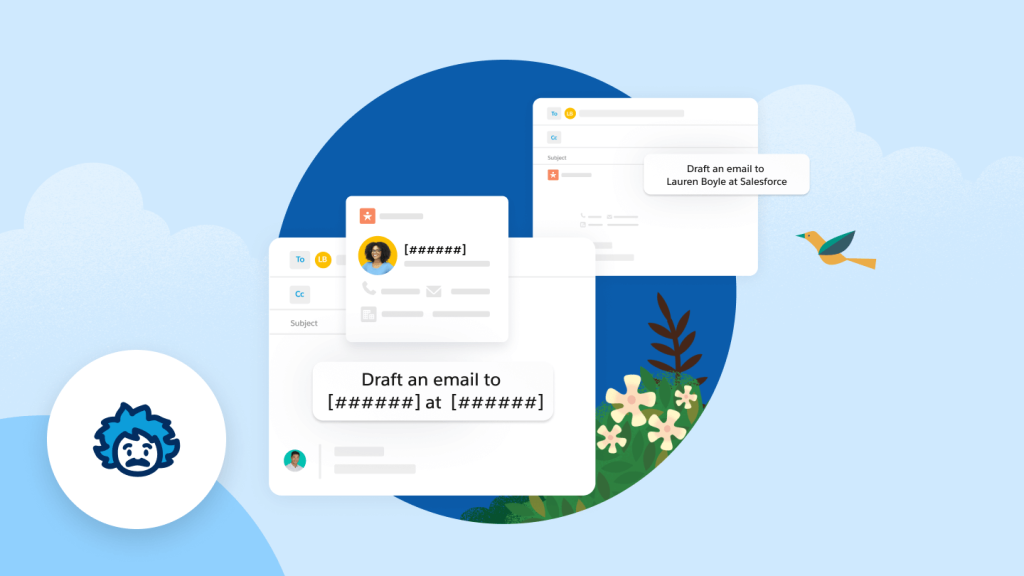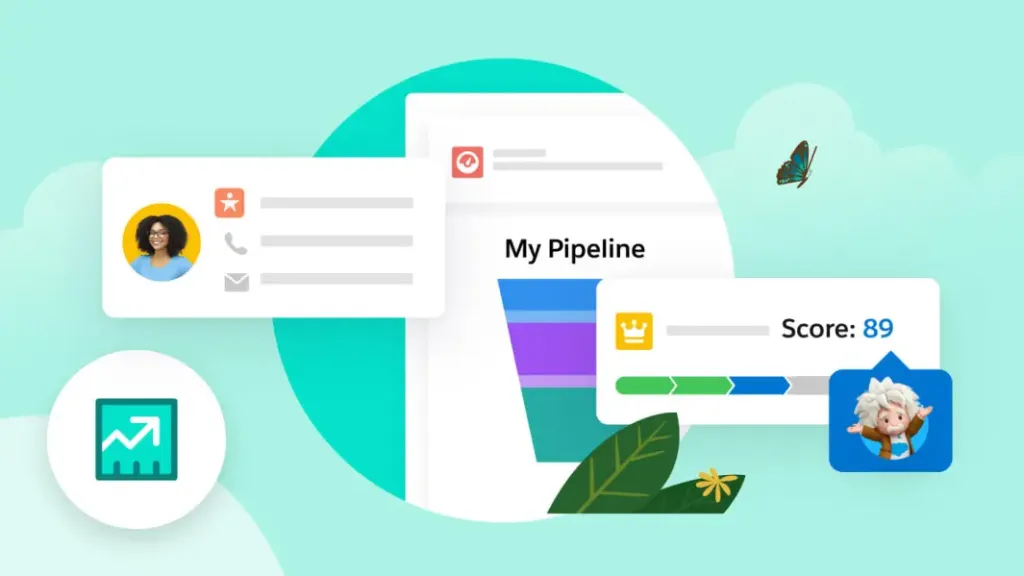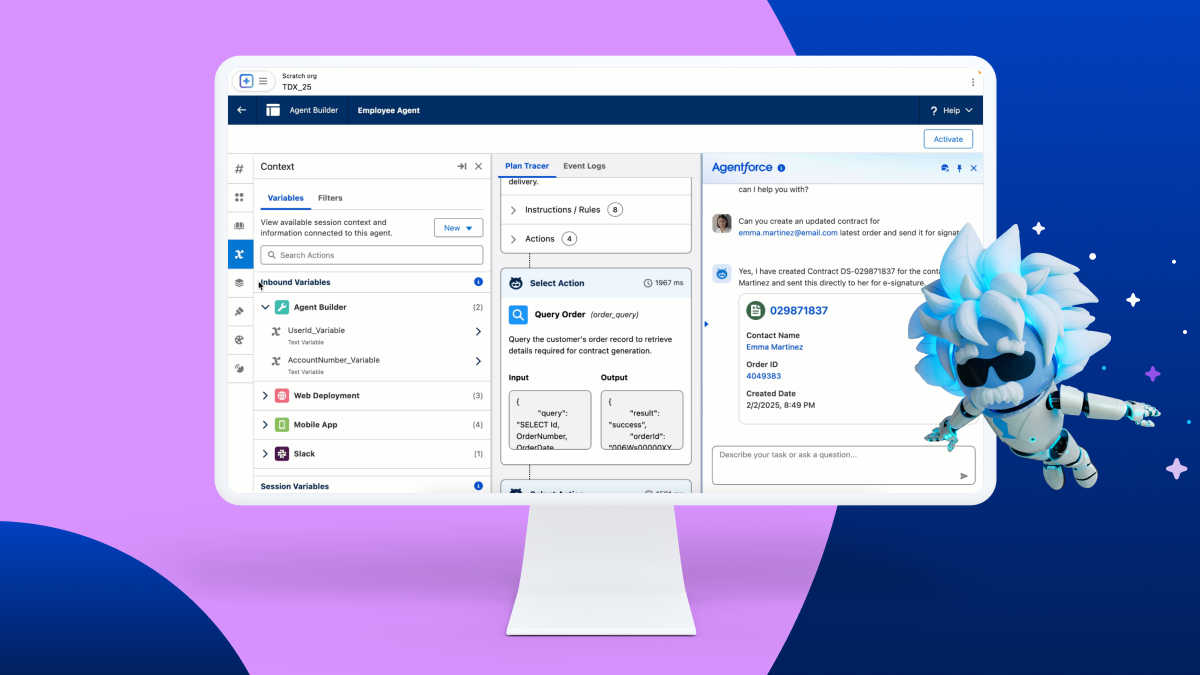Artificial Intelligence is no longer a futuristic concept; it’s a present-day imperative for businesses looking to stay competitive. For organizations already leveraging the power of Salesforce, the integration of AI offers unprecedented opportunities for transformation. As a consultant, guiding your clients through this journey requires a strategic, holistic approach.
Salesforce has deeply embedded AI, particularly through its Einstein platform and the new Agentforce capabilities, into its CRM offerings. This means AI isn’t just an add-on; it’s designed to enhance every aspect of the customer journey, from sales and service to marketing and commerce.
So, how do you help your clients build a robust AI strategy on Salesforce? Here’s a consultant’s guide:
1. The Foundation: AI Readiness Audit & Data Purity
Before diving into specific AI tools, a critical first step is to assess your client’s current landscape.
- Data Quality is Paramount: AI thrives on data. Inaccurate, incomplete, or inconsistent data will lead to flawed insights and unreliable AI outputs. Conduct a thorough data quality evaluation. Identify and rectify duplicates, inconsistencies, and outdated information. Explain to your clients that “clean data in, clean AI out” is the golden rule.
- Infrastructure Assessment: Can their existing Salesforce setup handle the increased data processing and potential complexity that AI brings? Review their current integrations, customisations, and overall system architecture to ensure it’s ready for AI workloads.
- Team Readiness: Do their teams understand the potential of AI and how it can augment their work? Identify potential resistance to change and plan for comprehensive training and change management initiatives.
2. Strategic Alignment: Identifying High-Impact Use Cases
The temptation might be to implement AI everywhere. However, a successful strategy starts small, focusing on areas that deliver tangible business value.
- Align with Business Objectives: Begin by deeply understanding your client’s overarching business goals. Are they aiming to reduce customer churn, increase sales conversion, improve service efficiency, or personalize marketing efforts?
- Prioritize Use Cases: Work collaboratively with stakeholders to identify specific pain points and opportunities where AI can make the biggest difference with the least initial effort. Examples include:
- Sales: Predictive lead scoring, opportunity insights, automated email drafting, meeting preparation.
- Service: Intelligent case routing, chatbot automation for common queries, sentiment analysis, agent response suggestions.
- Marketing: Audience segmentation, personalized content generation, predictive journey planning.
- Commerce: Personalized product recommendations, demand forecasting, optimized pricing.
- Balance Quick Wins and Long-Term Vision: Advise on implementing low-risk, high-impact use cases first to demonstrate value and build confidence. This also allows for the establishment of effective guardrails before a broader rollout.
3. Architectural Planning & Trust Layer Implementation
Once use cases are defined, the technical blueprint needs to be drawn.
- Integration with Salesforce Ecosystem: Design how the AI system will seamlessly fit within their existing Salesforce setup. This includes data flow, component interaction, and leveraging Salesforce’s metadata-driven architecture for contextual awareness. Salesforce’s Data Cloud plays a crucial role in unifying disparate data sources for a complete customer view.
- Leveraging Salesforce AI Capabilities: Salesforce offers various AI options:
- Einstein: Salesforce’s proprietary AI models built for CRM use cases, offering predictive analytics, natural language processing, and more.
- Agentforce: Salesforce’s framework for building autonomous AI agents that can take action based on business goals, going beyond just responding to queries.
- Einstein Copilot: A conversational AI assistant for CRM that can reason and execute tasks based on data, metadata, prompts, and workflows.
- Prompt Builder: For guiding AI responses without extensive coding, particularly useful for marketing and service teams.
- The Einstein Trust Layer: Crucially, emphasize and implement the Einstein Trust Layer. This built-in security and privacy framework is vital for responsible AI adoption. It includes features like sensitive data masking, zero data retention, encrypted communications, and an AI audit trail, ensuring data privacy and compliance.
- Governance Frameworks: Establish clear governance guidelines for AI usage, including who approves and maintains AI prompts, how agent decisions are version-controlled, and what data should be masked from certain agents or users.
4. Iterative Development: Model Training, Testing, and Optimization
AI implementation is not a one-time event; it’s an ongoing process of refinement.
- Model Training & Validation: Use the client’s actual data to train AI models. Emphasize clean, relevant data for accurate predictions. Rigorously test AI predictions against known outcomes and adjust models as needed to improve performance.
- Pilot Programs & Feedback Loops: Start with a small pilot group. Monitor usage, gather feedback, and use this information to make iterative improvements. Salesforce’s Central Evaluation Framework (SF Eval) can streamline the process of evaluating AI outputs.
- Continuous Monitoring & Optimization: Regularly monitor AI performance metrics like accuracy, adoption rates, and task completion. Refine algorithms, prompts, and workflows based on user feedback and evolving business needs.
5. Change Management & User Adoption
Technology is only as good as its adoption.
- Training and Empowerment: Provide comprehensive training to all users, from IT professionals to end-users. Focus on how AI will augment their work and make them more efficient, rather than replacing their roles.
- Foster Collaboration: Encourage collaboration between IT, business teams, and leadership. Workshops and open forums can help teams understand AI better and foster a sense of ownership.
- Communicate Value: Clearly articulate the benefits of AI to the workforce. When employees see how AI optimizes their work and helps them achieve better outcomes, adoption will naturally increase.
The Consultant’s Differentiator
In this AI-driven era, a Salesforce consultant’s value extends beyond technical implementation. It’s about becoming an AI-driven advisor. This means:
- Specializing: Developing deep expertise in specific Salesforce clouds or industries, demonstrating how AI can solve unique challenges within those domains.
- Focusing on Business Outcomes: Translating AI capabilities into measurable business results and return on investment.
- Staying Ahead on AI Ethics: Guiding clients on responsible AI practices, ensuring transparency, fairness, and accountability.
By following this strategic guide, you can empower your clients to harness the full potential of AI on Salesforce, driving significant business transformation and securing a competitive edge in today’s intelligent marketplace.




